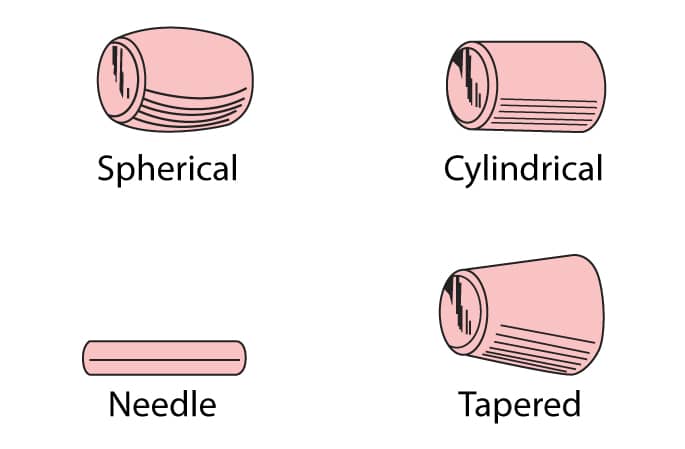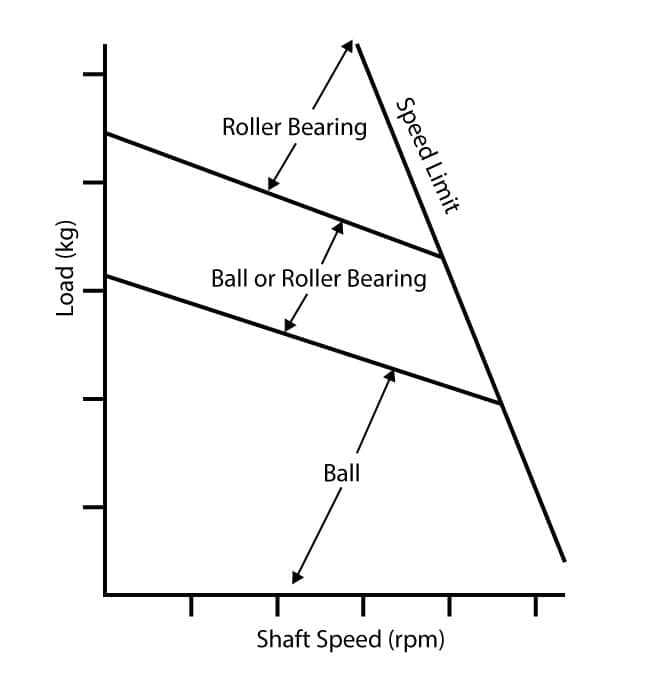Introduction
Cylindrical roller bearings consist of an outer ring, inner ring, cage and rollers. The cylindrical rollers (rolling elements) may be either solid or hollow. The diameter of each cylinder is not much smaller than the length of each cylinder, this prevents the bearings skewing under load.
Cylindrical roller bearings can carry high radial loads but they are not well suited to handling axial loads.

Cylindrical Roller Bearing
Roller Bearings
There are four main types of roller bearing and each is named after the rolling elements they use.

Roller Bearing Elements
All roller bearings operate using line contact and can carry significantly higher radial loads than ball bearings; most roller bearings are poorly suited to handle axial loads.
Roller bearings have higher coefficients of friction than ball bearings and are consequently not suitable for very high-speed applications. Roller bearings do not use the term angular contact or angular load.

Bearing Suitability Graph
Related Online Engineering Courses
Anti-Friction Bearing Fundamentals
Additional Resources
https://en.wikipedia.org/wiki/Bearing_(mechanical)
http://courses.washington.edu/engr100/Section_Wei/engine/UofWindsorManual/Bearings.htm
https://www.engineering.com/Blogs/tabid/3207/ArticleID/130/categoryId/11/Bearings.aspx